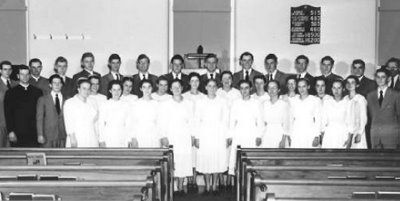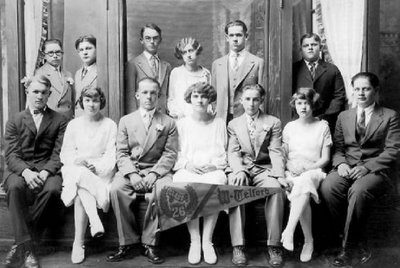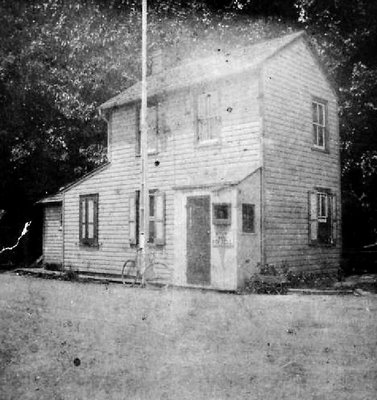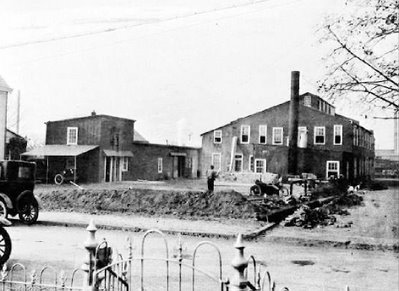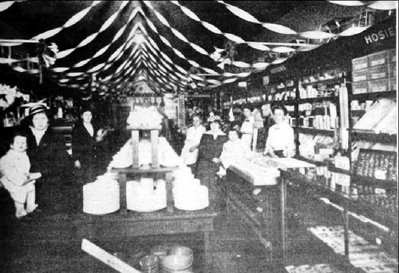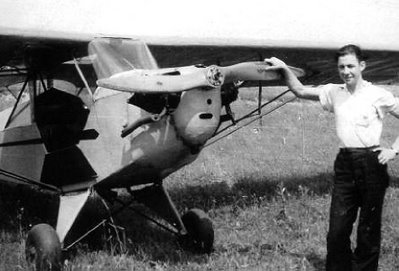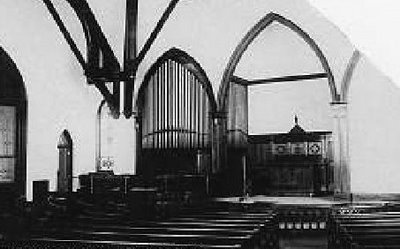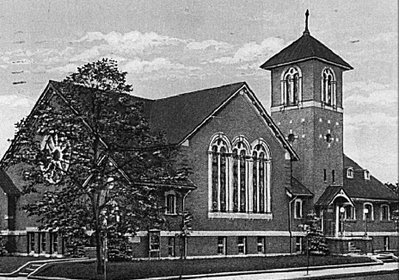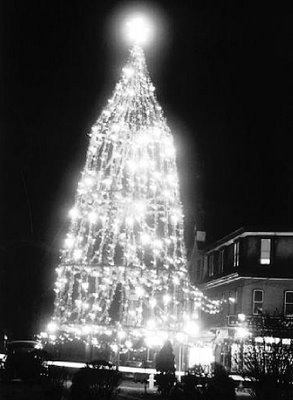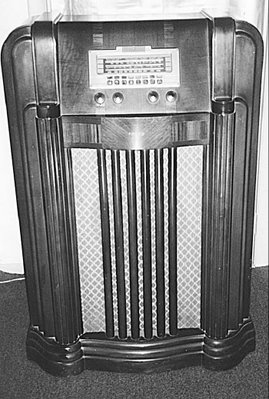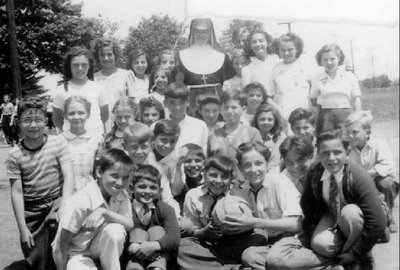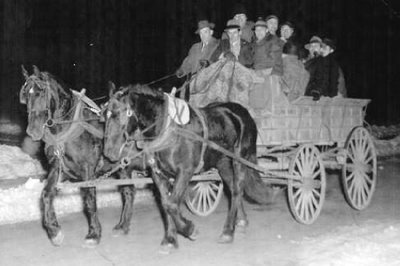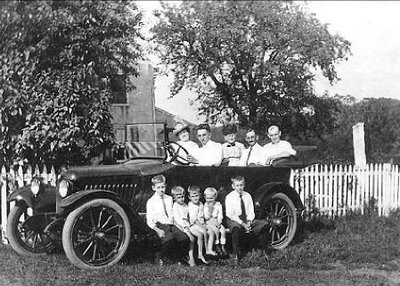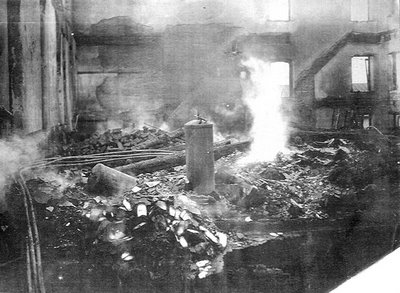
By MICHAEL RUBINKAM
Associated Press Writer
BOYERTOWN - Panic spread through the audience as quickly as the flames devouring the highly flammable stage curtains.
Nearly 400 people had packed an opera house to watch or perform in a play called "The Scottish Reformation." Now all of them, all at once, were trying to flee a blazing second-floor theater with woefully inadequate means of escape.
Separated from her siblings and father, an 11-year-old named Anna Weber got on her belly and began crawling through a tangle of legs. It was her only hope of making it out alive.
The Rhoads Opera House fire, 100 years ago on Sunday, struck a devastating blow to this small, thriving industrial town of iron foundries and cigar factories 40 miles northwest of Philadelphia.
With 170 killed, the blaze ranks as one of the deadliest of the 20th century, worse than the better-known Triangle Shirtwaist factory fire in New York three years later. Whole families in this Pennsylvania Dutch community were lost; children became orphans; parents grieved over dead sons and daughters.
Though largely forgotten, the tragedy helped usher in a slew of fire safety standards and building regulations now taken for granted: Marked exits. Doors that open outward. Easily accessible fire escapes.
"The fire's impact was sobering, immediate, and far-reaching," historian and journalist Mary Jane Lentz wrote in "A Town in Tragedy," a 1992 account of the blaze and its aftermath. "Boyertown learned a tragic lesson. Philadelphia learned. The whole country learned."
To mark the centennial, a memorial service will be held Sunday at St. John's Lutheran Church — the same church that supplied most of the actors on that terrible night 100 years ago.
Also, the Boyertown Area Historical Society has a new exhibit on the blaze, and a concert and other events are planned through April.
The fire, which began during an intermission about three-quarters of the way through the play, was the consequence of a seemingly innocuous mishap.
A young man named Harry Fisher had been hired to operate a stereoscopic slide projector as part of the evening's entertainment. While he was changing a slide, a hose from one of the projector's gas tanks came loose, and made a loud hissing sound that startled people in the darkened theater. When cast members pulled open the curtains to see what the commotion was about, they knocked over a coal-oil lamp and a kerosene footlight, starting a small fire on stage.
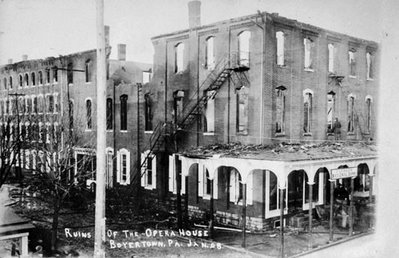
The flames soon reached a kerosene tank that fueled the stage lights, creating an inferno that spread to the curtains, the ceiling, the varnished wood walls.
Many of the theatergoers tried to leave the overcrowded auditorium the way they came in, only to find that the door swung inward.
"From the force of everyone pushing against it, they couldn't get hold of the door to actually open it," said Lindsay Dierolf, collections director at the historical society.
Making matters worse, the fire escapes were unmarked and could be reached only by climbing through windows 3 feet off the floor, a difficult task for children and for women in the long, heavy dress of the day.
Despite the screaming and confusion, the suffocating smoke and intense heat, more than half of the audience and cast found their way to safety. Many people ran down a second set of stairs behind the stage or used the fire escapes. Others were rescued by townspeople who had rushed inside the burning building.
Among the survivors was little Anna Weber, who was able to crawl out of the building and run home.
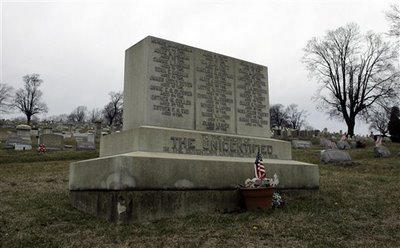
A memorial to the 25 unidentified victims.
Her 10-year-old sister, Martha, wasn't as lucky. When rescuers began pulling bodies from the wreckage the following day, they found her lifeless form near the exit. She'd either been trampled to death or succumbed to the poisonous gases.
Growing up in the 1960s, Anna Weber's grandson, Timothy Werstler, heard tales of the fire from his grandmother.
"She'd talk about it in a very matter-of-fact way," Werstler, 51, of Lancaster, said last week in an interview. "My grandmother wasn't a person who was introspective, who told you how she felt about anything. She was a very even-keeled kind of person."
Even so, she often had nightmares.
"She'd call out. She'd wake me up and I'd get scared," Werstler said. "She said they were not nightmares of the fire, but I just wonder whether that traumatic experience at a young age may have triggered something."
Nearly all of Boyertown shut down in the wake of the fire, but not so the town's largest business: the Boyertown Burial Casket Company. The toll was so overwhelming that gravediggers couldn't keep up, and many funerals had to be postponed.
Six days after the fire, a funeral procession for 25 unidentified dead drew 15,000 people. Each of the victims rode in a horse-drawn hearse accompanied by an honor guard of four white-gloved pallbearers. The bodies, which had been burned beyond recognition, were buried together in a common grave.
Afterward, townspeople rarely spoke of the opera house fire, nor commemorated it. Other than an occasional newspaper story marking an anniversary, there was little to suggest what had happened here.
"The town just wanted to get on with living and bounced back in a remarkable way," Lentz, the author, said in an interview.
The Rhoads Opera House fire was one of several hellish blazes of the early 20th century that helped spotlight the inadequacy of the nation's fire safety laws.
In 1903, more than 600 people died inside the Iroquois Theatre in Chicago, a building with no sprinkler system and inadequate exits. The 1911 fire at New York's Triangle factory, which killed 146, was a scandal in part because the doors had been locked to prevent employees from stealing.
Spurred by the catastrophe in Boyertown, Gov. Edwin Stuart signed Pennsylvania's first comprehensive fire-safety laws on May 3, 1909.
The legislation served as a model for other states, creating standards for doors, landings, exits and other features of public buildings. It also banned combustible stage curtains and kerosene lighting from theaters.
The building's owner, Dr. Thomas J.B. Rhoads, vowed to rebuild, and he did, an imposing three-story structure that still dominates the corner of East Philadelphia Avenue and South Washington Street. A plaque on the front marks the tragedy.
The building, which houses a real-estate office, a fitness center, and apartments, looks very much like the circa-1885 original, but with an important distinction: It was constructed partly of poured concrete.
"It's the most fireproof building in town," Dierolf said.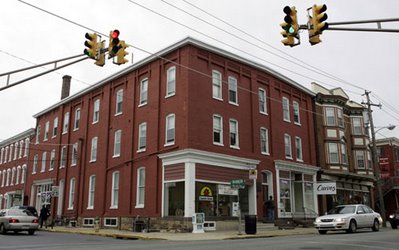
The site as it looks now
 RSS
RSS
